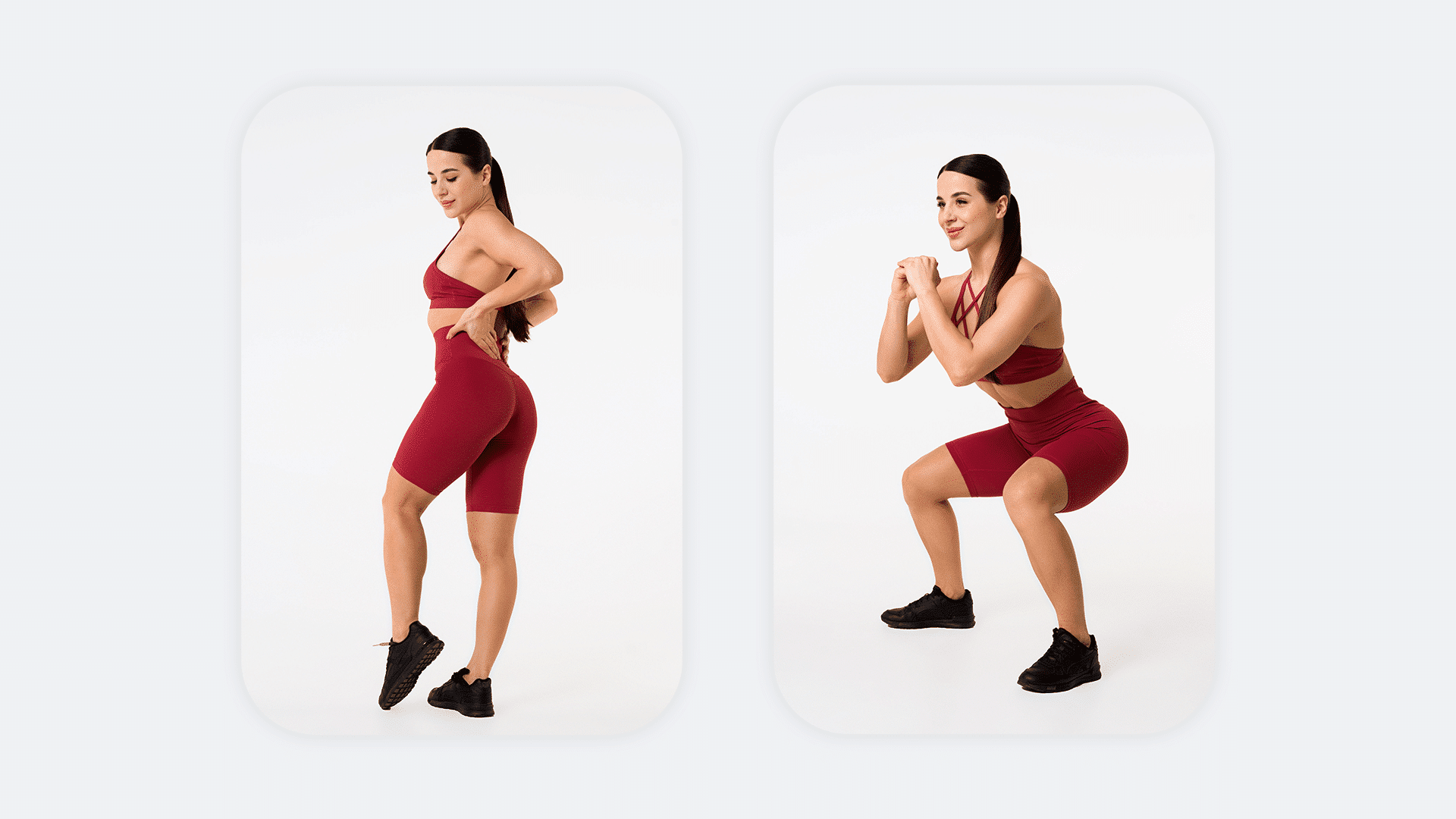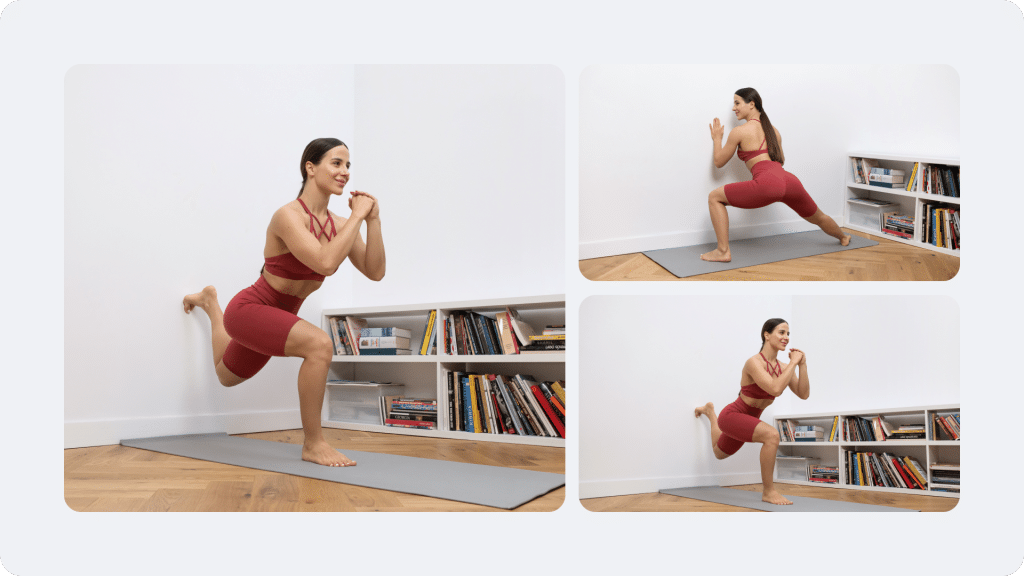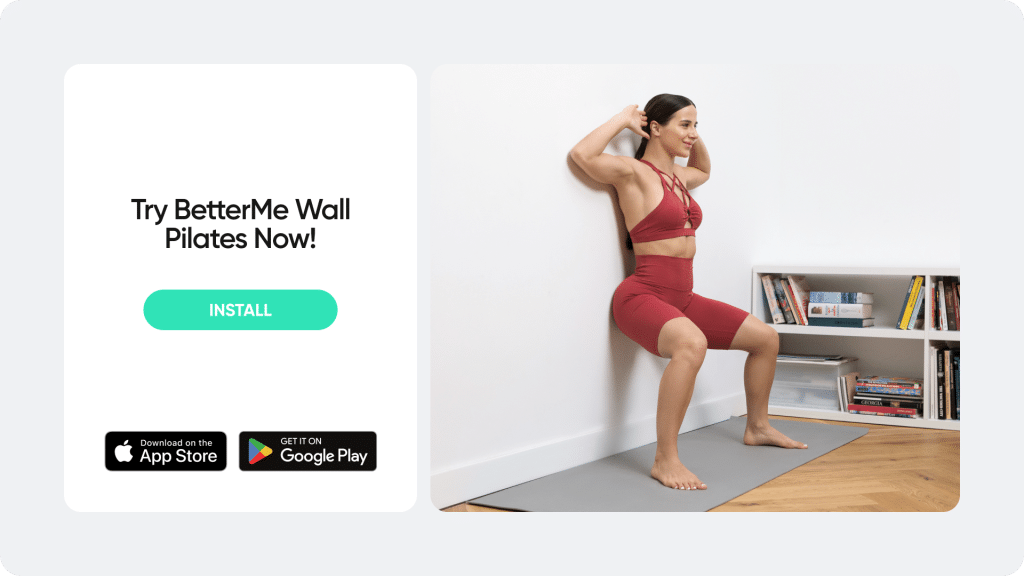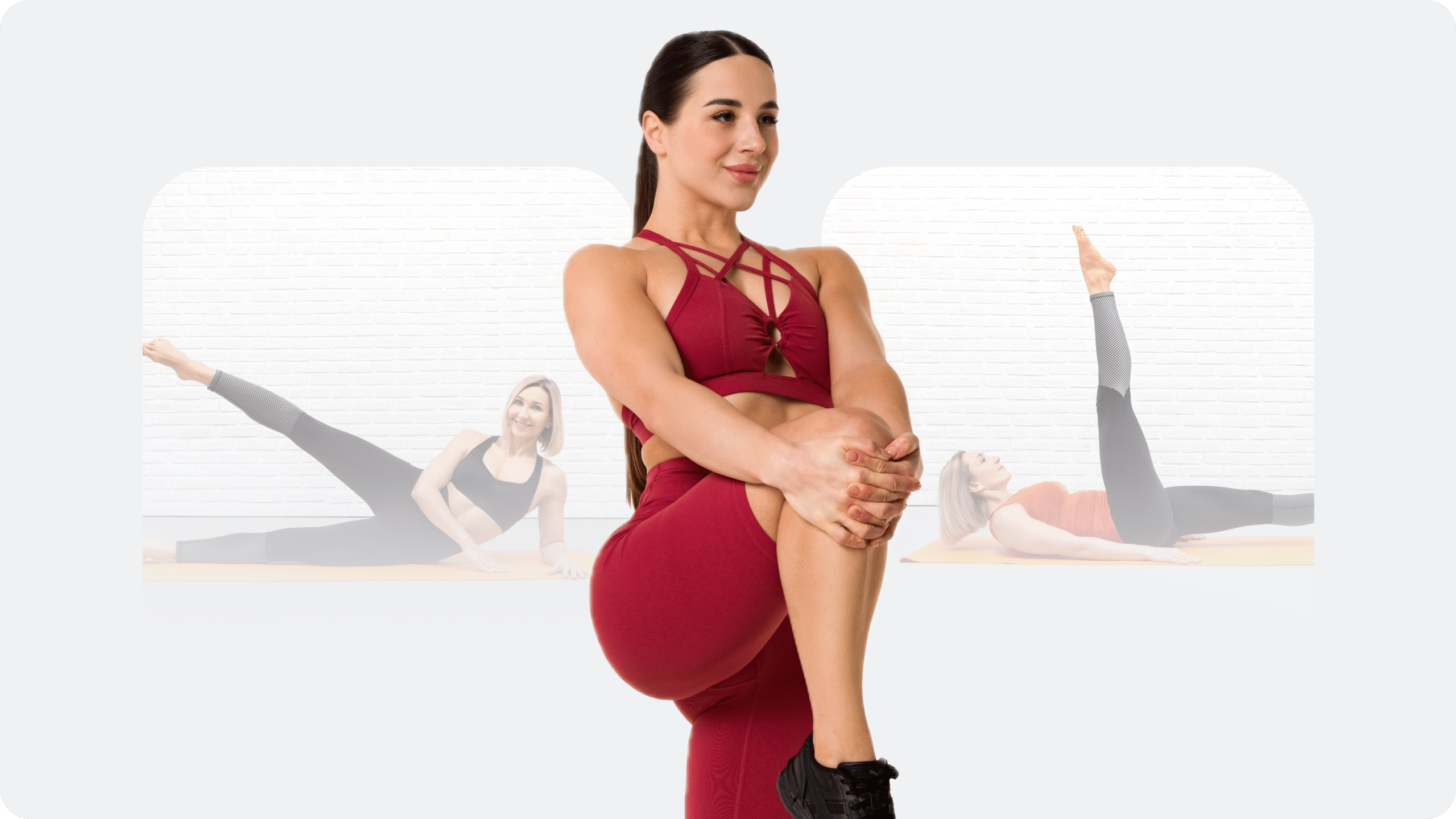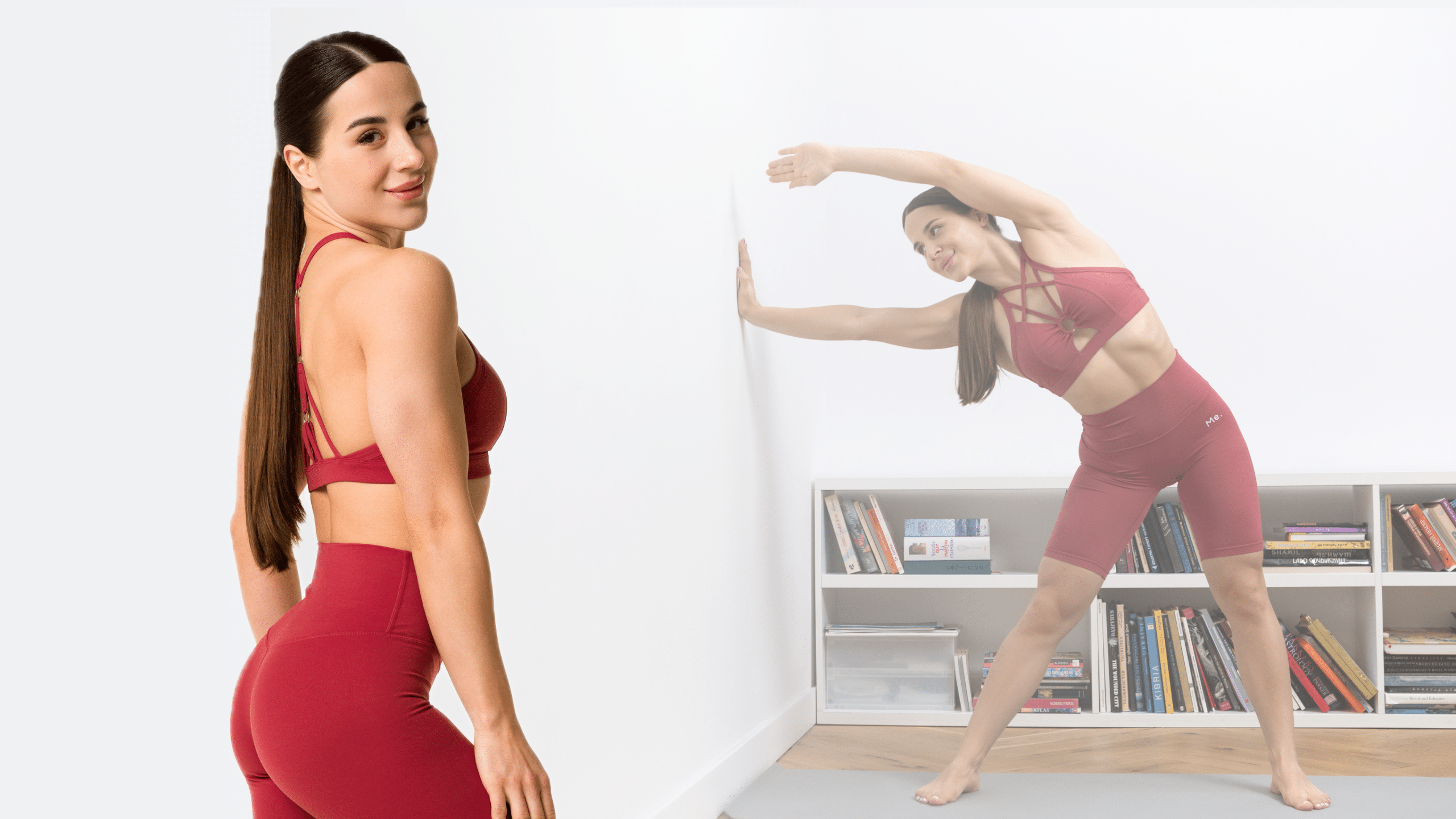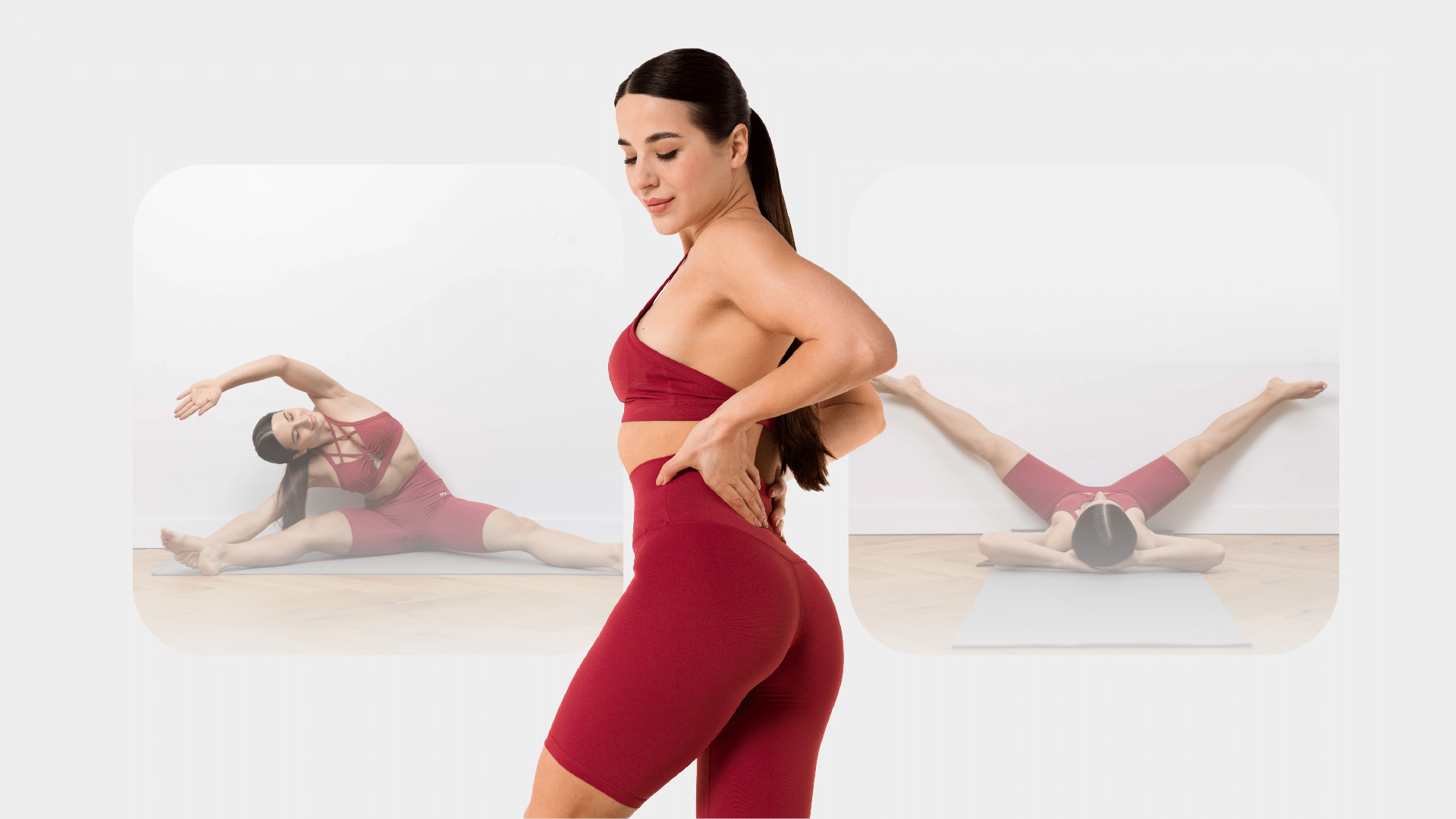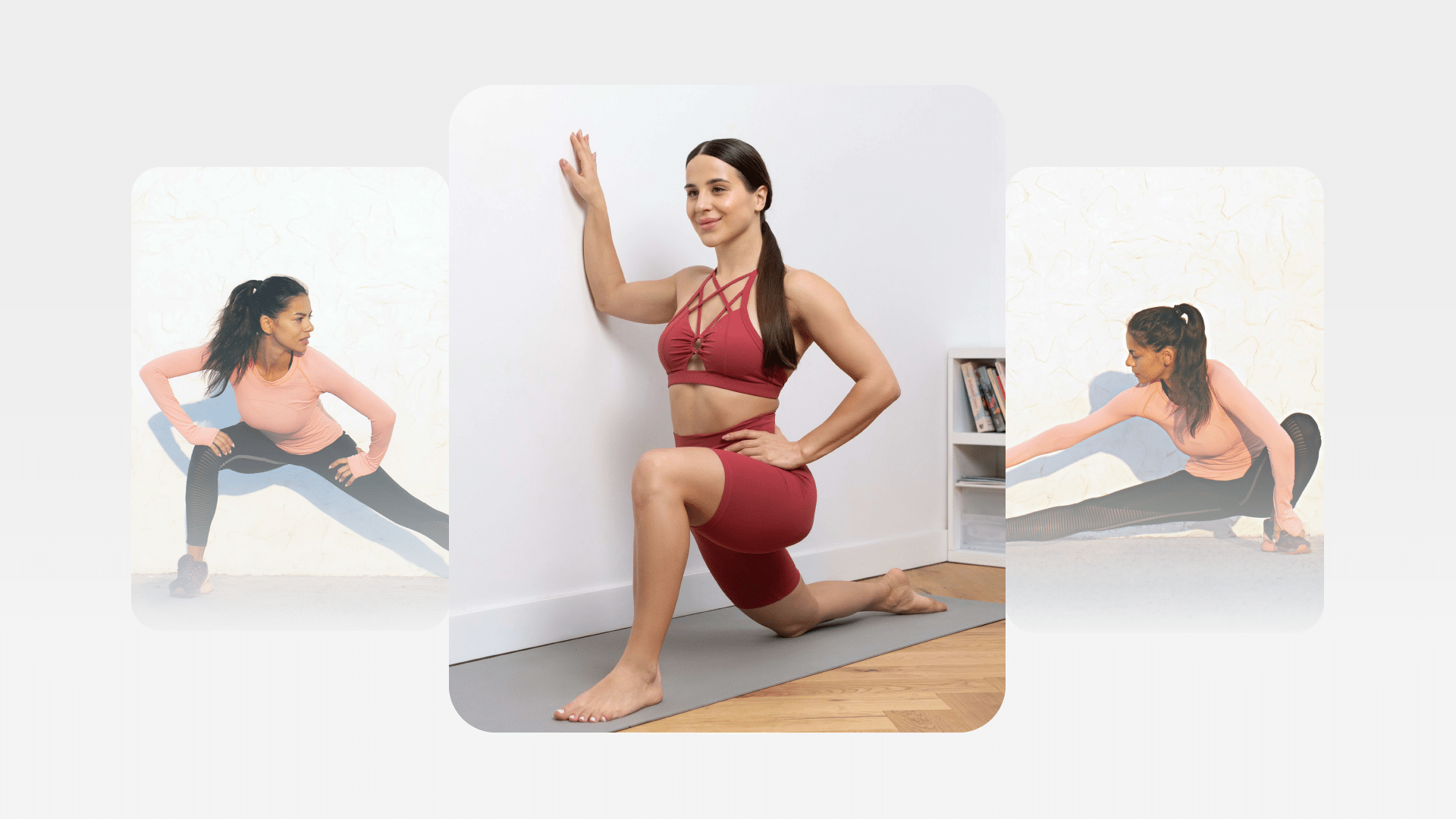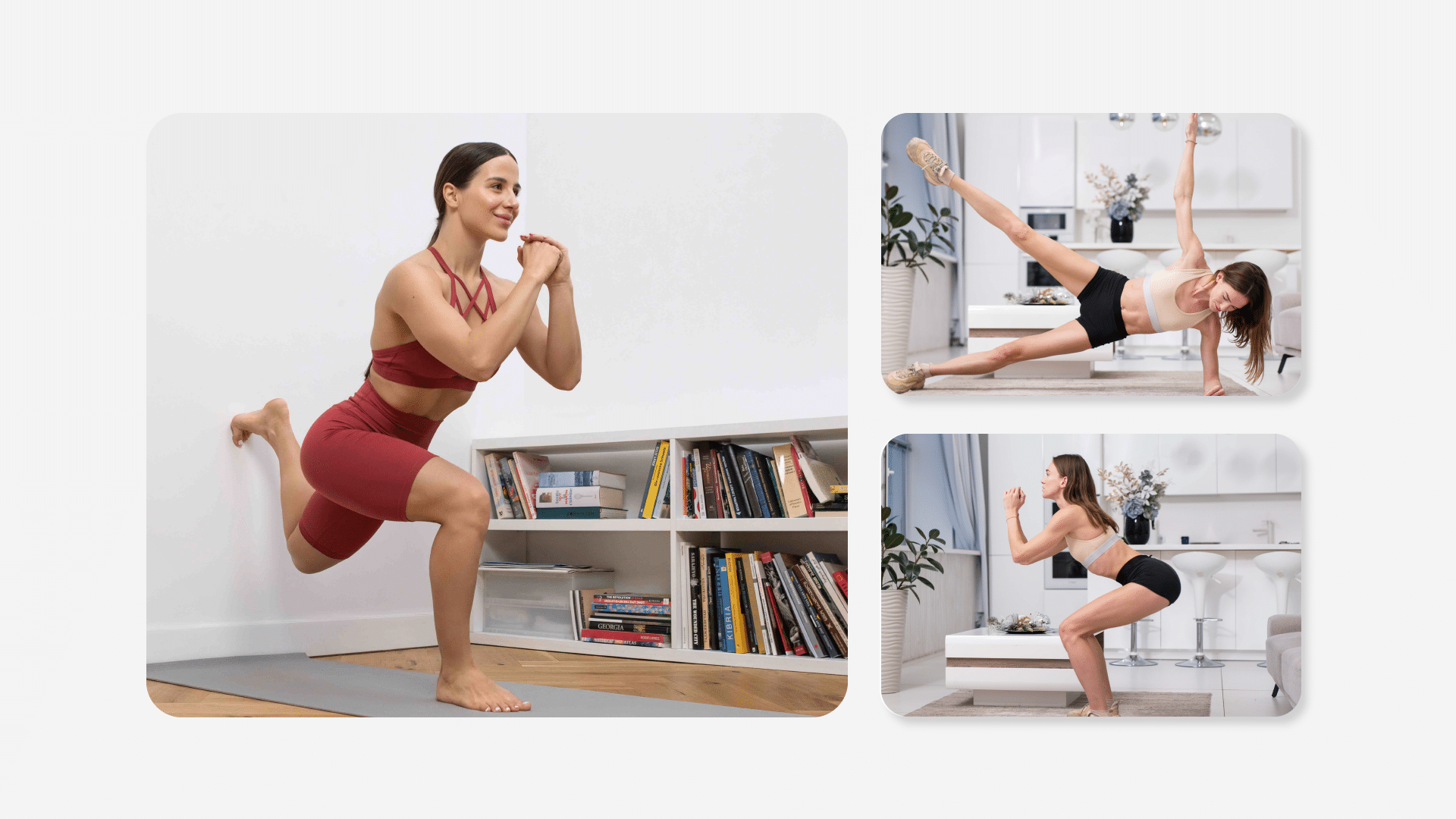Squats are a popular lower-body compound exercise that targets multiple muscles in the lower extremities, including the quads, hamstrings, groin (adductor), hip flexors, calves, and, of course, the glutes. Aside from these, squats also target the muscles in your core. Wall squats with ball are a lesser popular variation of the traditional bodyweight squat that we all know and love. If you’d like to know what doing wall squats with a yoga ball entails, its benefits, and how to do this exercise correctly, read on to find out!
What Are Wall Squats With Ball?
Depending on your fitness circle and their lingo, you may have heard of this exercise by several other names/descriptions. Some refer to it as a ‘Swiss ball body weight wall squat’, ‘squats with exercise ball on wall’, ‘stability ball wall squats’, ‘wall ball squats’, and many others.
Despite its numerous names, this exercise simply refers to – as the name suggests – doing a squat while leaning on a ball that’s placed behind your back and the wall. The ball is often placed in the middle of your back, especially if using something as large as a yoga or medicine ball, but can sometimes be placed at your lower back.
Read More: Do Wall Sits Build Muscle?
What Are Some Wall Squats With Ball Benefits?
Before outlining step-by-step instructions on how to do wall squats with ball, let us figure out what are wall squats good for?
As previously stated, this exercise is simply a variation of traditional squats and thus will have the same benefits as the latter.
Wall squats can help to:
- Strengthen your core (1).
- Improve your balance and coordination, which in turn can reduce your risk of falls. This is especially important for senior adults.
- Burn calories, which aids in weight loss (2).
- Strengthen muscles in your legs. Strong leg muscles are not only important for athletes and their physical capacity, but they are also important for every day activities like walking, standing, running, sitting, getting in and out of bed, etc. (3, 4).
How To Do Squats Correctly?
Here’s how to perform squats with a yoga ball on the wall with the correct posture:
Option 1: How to do wall squats with a stability ball
Side note: Stability balls are also known as yoga or exercise balls.
- Place a yoga/exercise ball behind your back. Since this ball is quite big, it will very likely be touching your mid back as well as part of your upper and lower back.
- Gently lean against the ball, ensuring your weight is supported and the position feels stable.
- Position your feet to be approximately shoulder-width apart. They should be slightly in front of your body (about 10 inches) and placed shoulder-width apart.
- While maintaining pressure into the ball; lower your hips and bend your knees, until your thighs are approximately parallel to the ground, or, to a depth you can control. Keep your feet flat on the ground – don’t go up on your tippy toes!
- Squat down to a depth you can control through the entire range. Stop if you feel any pain, especially in your knees.
- Hold this position for 2 breaths before exhaling and pushing through the floor, to return to your start position.
- This counts as 1 squat rep.
- Do 8 to 12 reps for 1 set.
Option 2: Wall squats with the ball for Pilates
Wall Pilates is a great and convenient way to do Pilates at home. For this exercise, you will need a pilates ball, which is smaller than your average yoga/exercise ball.
- Position your Pilates ball on your lower back and ensure it is adjusted to feel comfortable and stable when against the wall.
- Follow steps 2-7 as described in ‘option 1’ above.
To make this exercise harder, you could slow down the tempo on the lowering phase, add pauses, increase the number of reps or sets, or increase the load by holding a dumbbell or kettlebell by your sides or, up at your chest.
Lean and toned up body isn’t just a far-fetched fantasy. Check out the BetterMe app and watch it propel your weight loss journey into high gear!
FAQs
Are Wall Squats with a Ball Harder?
Not really.
The purpose of the ball is to provide support and help improve balance, which some individuals may find challenging when doing movements like bodyweight squats. Therefore, providing individuals with an easier alternative to a regular bodyweight squat. This can be particularly useful for those who are completely new to exercise, elderly populations, or individuals with reduced or limited mobility.
Wall Squats with Ball vs. Regular Squats: Which is Better?
While both variations follow the same movement pattern, the option that should be viewed as more beneficial, should be the option that is most suited to your individual status. For example, for seniors, individuals undergoing physical therapy, and older adults, wall ball squats may be considered a better option as compared to regular squats due to the additional support they can provide.
The Bottom Line
Wall squats are a valuable exercise to include in your regular Pilates routine or general lower-body gym workout. By introducing variety to your usual regimen, they can also help alleviate monotony. Furthermore, they provide a straightforward approach for older adults and individuals undergoing physical therapy to gradually enhance lower body strength.
DISCLAIMER:
This article is intended for general informational purposes only and does not address individual circumstances. It is not a substitute for professional advice or help and should not be relied on to make decisions of any kind. Any action you take upon the information presented in this article is strictly at your own risk and responsibility!
SOURCES:
- Comparison of Core Muscle Activation between a Prone Bridge and 6-RM Back Squats (2018, ncbi.nlm.nih.gov)
- Effects of Body Mass-Based Squat Training in Adolescent Boys (2013, ncbi.nlm.nih)
- Impact of home-based squat training with two-depths on lower limb muscle parameters and physical functional tests in older adults (2021, pubmed.ncbi.nlm.nih.gov)
- Strength, body composition, and functional outcomes in the squat versus leg press exercises (2016, researchgate.net)

